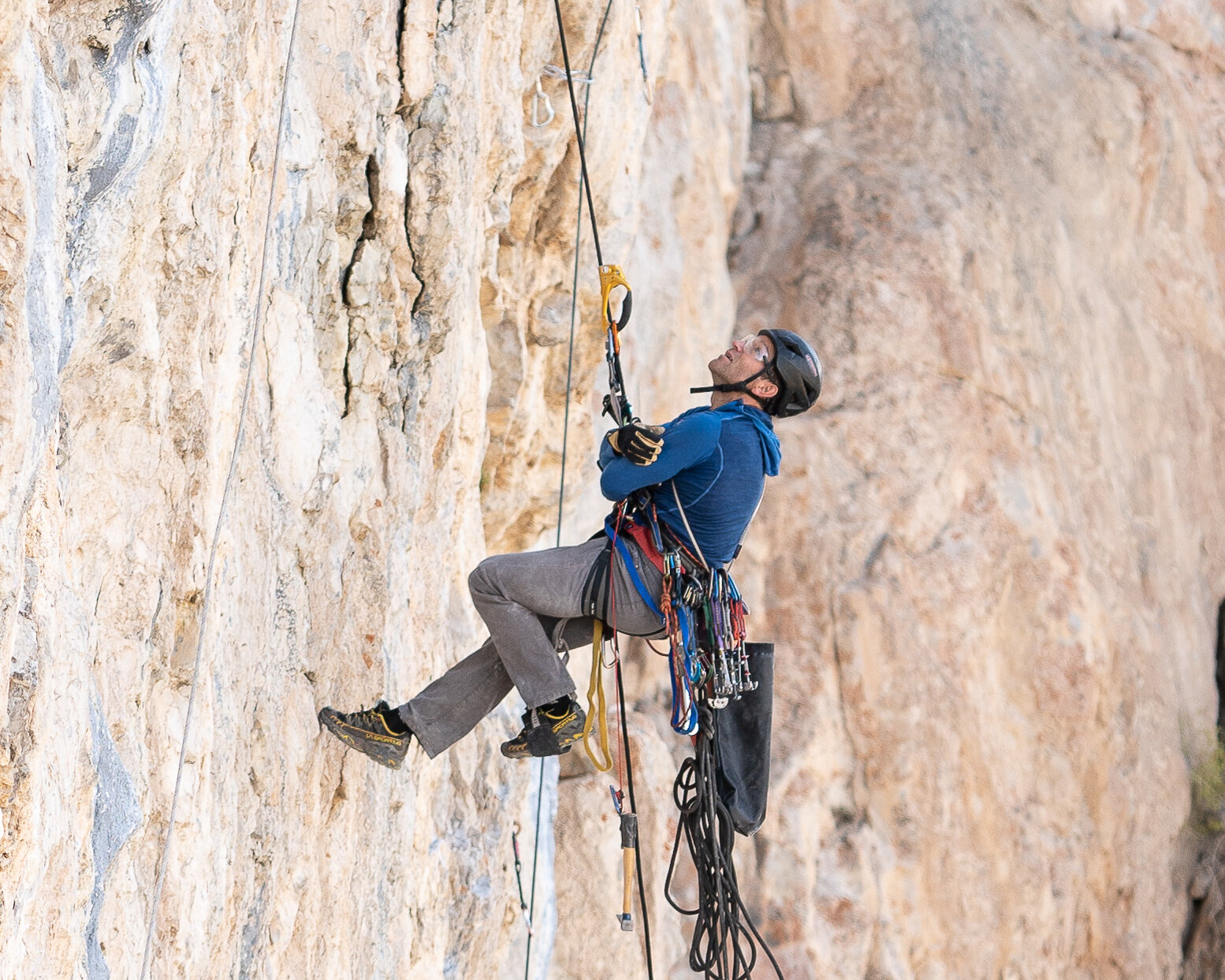ASCA New Anchor Guidelines
These are the ASCA universal guidelines both for new route anchors and for replacement anchors.
General guidelines and precautions:
Use only 304 stainless steel or higher corrosion resistance alloy stainless in all new or replacement bolts and hangers. Titanium glue in bolts are required in marine environments. Plated steel has been found to corrode even in the driest desert environments, especially in limestone. Plated steel Rawl/Powers 5-piece bolts can be very difficult to remove when corroded.
When possible, use ½” stainless steel Powers 5-piece expansion bolts or glue-ins. ⅜” stainless steel Powers 5-piece expansion bolts are the standard for backcountry, hand-drilled anchor replacement.
DO NOT apply silicone caulk, putty, or adhesive to mechanical bolts or hangers. This makes anchor replacement and maintenance more difficult, and can actually trap moisture in the bolt hole.
Single pitch lower-off anchors:
Are equipped with durable steel lower-off hardware and are positioned in a location that is:
In solid rock attached to the main rock face
Easy to clip from a good climbing stance, even for shorter climbers
Minimizing rope rub/drag and damage to the rock on soft rock
Anchor bolts are spaced apart at least twice the length of the bolt and can be horizontally or vertically offset. Horizontally staggered anchor bolts need to be extended with chain for the lower-offs to come to a single point when weighted.
Vertically offset bolts can either meet at a single point or can primarily load the top anchor bolt with the bottom bolt as a backup (French style anchor).
Why is it important for lower-offs to load at a single point?
When the two lower-off points are horizontally separated, rope twisting will occur. The further the horizontal distance, the more the rope will twist. Rope twisting can be severe and sometimes irreversible, leading to safety issues including ropes not pulling from a rappel, difficulty belaying, and interference with belay device function.
The best way to untwist a rope is to pull the rope repeatedly through a free-hanging, single point.
Horizontally separated anchor bolts with no extension will also loosen bolts and hangers with repeated loading and unloading. Typically, the left bolt will loosen as the hanger is rotated counterclockwise.
Multi-pitch rappel anchors:
Are equipped with rappel hardware such as rap rings or thick chain. Quicklink-attached wear components are preferred in high traffic areas to facilitate replacing rappel hardware.
Are positioned in a location:
In solid rock attached to the main rock face
Easy to clip from a good climbing stance, even for shorter climbers
Minimizing rope rub/drag and damage to the rock on soft rock
Easy to pull and clear of obstacles that can catch a rope
Follow the same guidelines as single-pitch anchors other than lower-offs.


